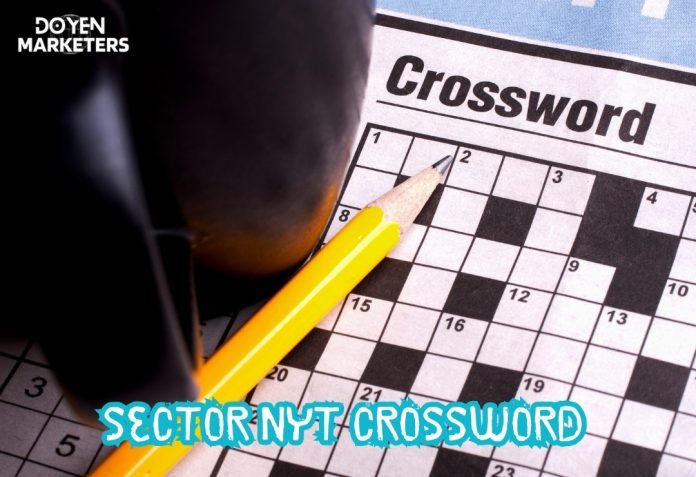If you’re a fan of crossword puzzles, you’ve likely heard of the Sector NYT Crossword. This popular crossword puzzle is published in The New York Times and has gained a reputation for being challenging and engaging.
With its clever clues and intricate wordplay, the Sector NYT Crossword has become a favorite among crossword enthusiasts.
The Sector NYT Crossword is a daily crossword puzzle that can be found in the print and online versions of The New York Times. The puzzle is known for its clever wordplay and challenging clues, which often require a deep knowledge of pop culture, history, and literature.
Whether you’re a seasoned crossword solver or a newcomer to the world of puzzles, the Sector NYT Crossword is sure to provide a satisfying challenge.
History of Crossword Puzzles
Table of Contents
- 1 History of Crossword Puzzles
- 2 Understanding the Sector NYT Crossword
- 3 Crossword Puzzle Design
- 4 Solving Strategies
- 5 Sector NYT Crossword Examples
- 6 Digital vs. Print Crosswords
- 7 The Future of Crossword Puzzles
- 8 Frequently Asked Questions
- 8.1 What clues indicate a play on words in the NYT Crossword?
- 8.2 How can you identify the theme of a NYT Crossword puzzle?
- 8.3 What strategies are best for solving the NYT Mini Crossword?
- 8.4 Who are some notable NYT Crossword puzzle creators?
- 8.5 What day features the most challenging NYT Crossword?
- 8.6 How does the difficulty of the NYT Crossword progress throughout the week?
Early Beginnings
Crossword puzzles have a rich history that dates back to the late 19th century. The first published crossword puzzle appeared in a newspaper called the New York World in 1913. This puzzle was created by a journalist named Arthur Wynne, who is often credited with inventing the crossword puzzle.
The puzzle was an instant hit and soon became a regular feature in many newspapers.
Over time, crossword puzzles evolved and became more complex. They became popular in many countries, including the United States, the United Kingdom, and Japan.
Today, crossword puzzles are a staple of many newspapers and magazines, and are enjoyed by millions of people around the world.
The New York Times Legacy
The New York Times is one of the most well-known newspapers in the world, and its crossword puzzle is one of the most famous and popular. The New York Times crossword puzzle was first published in 1942, and has been a daily feature of the newspaper ever since.
The New York Times crossword puzzle is known for its difficulty and its clever clues. It is a favorite of crossword enthusiasts, who enjoy the challenge of solving the puzzles and the satisfaction of completing them.
The New York Times crossword puzzle has also inspired many other crossword puzzles, including the Sector NYT Crossword.
Understanding the Sector NYT Crossword
If you are a fan of the New York Times crossword puzzle, you might have come across the term “sector” in some of the clues. In this section, we will explore what a sector is and its relevance to the puzzle structure.
Sector Definition in Crosswords
In the context of crosswords, a sector refers to a group of letters that are enclosed by black squares. Sectors are usually symmetrical and can be found in different shapes, such as circles, diamonds, and squares. Sectors are also sometimes referred to as “islands” or “regions.”
Sectors can be used in different ways in crossword puzzles. They can be used to divide the grid into smaller sections, making it easier for the solver to tackle the puzzle. They can also be used to create visual patterns or themes in the puzzle.
Relevance to Puzzle Structure
Sectors play an important role in the structure of crossword puzzles. They help to create a sense of balance and symmetry in the grid. They also provide a framework for the puzzle, allowing the constructor to place the theme entries and other important clues in specific locations.
Sectors can also affect the level of difficulty of a puzzle. For example, a puzzle with many small sectors might be easier to solve than a puzzle with a few large sectors. This is because smaller sectors allow for more cross-referencing and can help the solver to narrow down the possible answers.
Crossword Puzzle Design
When designing a crossword puzzle, there are several key elements that must be considered. These include clue crafting, grid layout, and theme development. Here’s a closer look at each of these elements:
Clue Crafting
Crafting good clues is an essential part of creating a successful crossword puzzle. Clues should be challenging, but not so difficult that solvers become frustrated. They should also be clear and concise, with no extraneous information.
Good clues often use wordplay or double meanings to lead solvers to the correct answer.
Grid Layout
The grid layout is another important aspect of crossword puzzle design. The grid should be symmetrical and visually appealing, with no isolated squares or awkward patterns.
Black squares should be placed in a way that creates natural breaks between words and sections of the puzzle. The grid should also be designed with the solver in mind, with the longest answers placed in the most accessible areas of the grid.
Theme Development
Themes are what set crossword puzzles apart from other word games. A good theme should be both clever and accessible, with a unifying concept that ties all of the answers together.
The theme should be introduced early in the puzzle, with clues and answers that hint at the overall theme. The theme should also be consistent throughout the puzzle, with no answers that are unrelated to the theme.
Solving Strategies
Common Techniques
When solving the Sector NYT Crossword, there are a few common techniques that can be helpful.
First, start with the clues that you know for sure and fill in those answers. This will give you a good foundation to work from and may help you figure out some of the more difficult clues.
Another common technique is to look for repeated letters or patterns in the grid. This can help you fill in other answers that share those letters or patterns.
Sector-Specific Tips
Each sector in the Sector NYT Crossword has its own unique challenges and quirks. Here are a few tips for each sector:
Technology
Technology clues in the Sector NYT Crossword can be tricky, as they often include technical jargon and acronyms.
If you’re not familiar with a particular term, try breaking it down into its component parts and see if that helps you figure out the answer.
For example, if you see the clue “CPU component”, you might not know what CPU stands for, but you could guess that the answer might be something related to a computer.
Entertainment
Entertainment clues in the Sector NYT Crossword can be fun and challenging. Look for clues that reference popular movies, TV shows, and music.
If you’re not familiar with a particular reference, try looking it up online to see if that helps you figure out the answer.
Business
Business clues in the Sector NYT Crossword often include financial terms and concepts.
If you’re not familiar with a particular term, try looking it up online or consulting a financial dictionary. Look for clues that reference well-known companies and business leaders.
Science
Science clues in the Sector NYT Crossword can be difficult, as they often include complex scientific concepts and terminology.
If you’re not familiar with a particular term, try breaking it down into its component parts and see if that helps you figure out the answer. Look for clues that reference well-known scientists and scientific discoveries.
Sports
Sports clues in the Sector NYT Crossword can be fun and challenging. Look for clues that reference well-known sports teams and athletes.
If you’re not familiar with a particular reference, try looking it up online to see if that helps you figure out the answer.
Sector NYT Crossword Examples
Notable Puzzles
If you’re a fan of the New York Times crossword, you’ve likely come across some memorable puzzles in the Sector category.
One notable puzzle was published on November 6, 2016, with the title “Sector Support.” The puzzle had a unique theme where the clues were presented in a circular pattern, with the answers intersecting at the center. It was a challenging puzzle that required a bit of lateral thinking to solve.
Another memorable Sector puzzle was published on October 29, 2017, titled “Sector Seven.” This puzzle had a sci-fi theme and featured clues related to space travel and extraterrestrial life. The puzzle was praised for its clever wordplay and creative use of the Sector grid.
Famous Constructors
Several famous crossword constructors have contributed to the Sector category over the years.
One of the most well-known is Elizabeth Gorski, who has created dozens of puzzles for the New York Times. Gorski is known for her inventive themes and clever wordplay, and her Sector puzzles are no exception.
Her puzzles often feature pop culture references and puns that are sure to make you smile.
Another notable constructor in the Sector category is Patrick Berry. Berry has created some of the most challenging puzzles in the New York Times crossword, and his Sector puzzles are no exception.
His puzzles often feature tricky clues and obscure references, making them a favorite among seasoned crossword solvers.
Digital vs. Print Crosswords
When it comes to solving crossword puzzles, there are two main options: print and digital. Each has its own advantages and disadvantages, depending on your preferences and needs. In this section, we will explore the differences between digital and print crosswords, with a focus on accessibility and user experience.
Accessibility
One of the biggest advantages of digital crosswords is their accessibility. With digital crosswords, you can solve puzzles anywhere, anytime, as long as you have an internet connection.
You don’t need to carry around a physical newspaper or magazine, and you don’t need to worry about losing your place in the puzzle.
In addition, digital crosswords often come with features that make them more accessible to people with disabilities, such as the ability to enlarge the font or use a screen reader.
On the other hand, print crosswords can be more accessible for people who prefer a tactile experience. Some people find it easier to solve puzzles on paper, where they can write in the margins, circle clues, and make notes.
In addition, print crosswords don’t require any special technology or devices, which can be a plus for people who don’t have access to a computer or smartphone.
User Experience
The user experience of digital and print crosswords can vary greatly.
Digital crosswords often come with features that make them more user-friendly, such as the ability to check your answers, get hints, or highlight clues.
In addition, digital crosswords can be more interactive, with animations and sound effects that make the solving experience more engaging.
Print crosswords, on the other hand, offer a more traditional solving experience. Some people prefer the nostalgia of solving puzzles on paper, and find it more satisfying to fill in the squares with a pen or pencil.
In addition, print crosswords can be more relaxing, as they don’t require you to stare at a screen for extended periods of time. Also read about How Old is Lil 50 and Pi123.
The Future of Crossword Puzzles
Innovation in Design
Crossword puzzles have been around for over a century, but that doesn’t mean they can’t be improved upon. In fact, many designers are constantly looking for ways to innovate and make crossword puzzles more engaging for solvers.
One way this is being done is by incorporating more visual elements into the puzzles, such as images or symbols. This not only makes the puzzle more visually appealing, but it can also provide additional clues for solvers.
Another way designers are innovating is by creating themed puzzles that are tied to current events or pop culture. This not only makes the puzzles more relevant, but it also adds an extra layer of challenge for solvers who may not be as familiar with the theme.
Additionally, some designers are experimenting with new grid designs that break away from the traditional black-and-white grid. These new designs can add another level of difficulty for seasoned solvers who are used to the standard format.
The Role of Technology
Technology has played a huge role in the evolution of crossword puzzles, and it will continue to do so in the future.
One way technology is being used is by creating digital versions of puzzles that can be played on a computer or mobile device. This not only makes the puzzles more accessible, but it also allows for more interactive elements, such as the ability to highlight or reveal certain letters.
Another way technology is being used is by creating puzzle-solving software that can assist solvers in completing puzzles. This software can provide hints or suggestions for difficult clues, or it can even solve the entire puzzle for you.
While some purists may argue that this takes away from the challenge of solving a crossword puzzle, others see it as a way to make the puzzles more accessible to a wider audience. If you like this article then visit Doyen Marketers Again and also read about Snapchat Planets.
Frequently Asked Questions
What clues indicate a play on words in the NYT Crossword?
In the NYT Crossword, clues that indicate a play on words usually involve puns, homophones, or double meanings. These clues can be tricky to decipher, but they often provide a fun and satisfying “aha!” moment when solved.
How can you identify the theme of a NYT Crossword puzzle?
The theme of a NYT Crossword puzzle is usually hinted at by the longest answers in the grid. These answers will often have a common thread or concept that ties them together. Additionally, the title of the puzzle can sometimes provide a clue to the theme.
What strategies are best for solving the NYT Mini Crossword?
The NYT Mini Crossword is a shorter version of the daily puzzle and can be solved in just a few minutes.
Some useful strategies for solving the mini puzzle include looking for common letter combinations, using the crossings to help fill in words, and focusing on the shorter clues first.
Who are some notable NYT Crossword puzzle creators?
The NYT Crossword has a long history of talented puzzle creators, including Will Shortz, who has been the editor since 1993, and constructors like Elizabeth Gorski, Patrick Berry, and David Steinberg.
What day features the most challenging NYT Crossword?
The NYT Crossword gradually increases in difficulty throughout the week, with Monday being the easiest and Saturday being the most difficult. Sunday puzzles are larger and more challenging than the daily puzzles.
How does the difficulty of the NYT Crossword progress throughout the week?
The difficulty of the NYT Crossword progresses as follows:
Monday is the easiest. Tuesday is a bit harder. Wednesday is next. Thursday follows, then Friday. Saturday is the most difficult. Sunday’s puzzle is larger and more challenging. Each day’s puzzle is designed to be a satisfying challenge for solvers of all skill levels.














